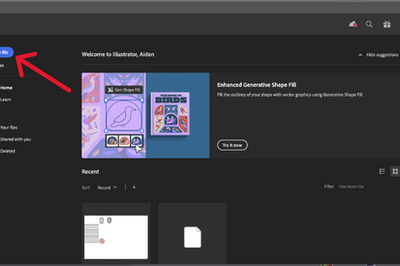
views
As the Colonial era Parade Brigade Grounds in Kolkata decks up to host one of the biggest opposition rallies ahead of the Lok Sabha elections 2019, it is yet again an opportunity for the old veteran to etch its name in history. From hosting Soviet leaders like Nikita Khrushchev and Nikolai Bulganin, Saturday's venue for the mammoth political event has heard several dissenting voices against the ruling government in the past as well.
The patch of green at the heart of the city is poised for what may be a record turnout, thanks to Trinamul’s dominance in Bengal and its leaders’ knack for mobilising crowds. The main dais, from where the speeches will be delivered, is expected to feature the who’s who of Opposition politics in the country.
If one looks back at the history of this venue, there is a long legacy to be discovered. The ground perhaps hosted one of its first political meetings in 1919, when Chittaranjan Das and other nationalist leaders railed against the Rowlatt Act before the Ochterlony Monument (now called Shaheed Minar).
Located in the backdrop of the iconic Victoria Memorial and the Indian Museum, this ground was developed as a parade ground of the forces at the Fort William in the second half of the 18th century by the British after their victory in the battle of Plassey.
The ground remains under the control of the Indian Army whose Eastern Command headquarters Fort William.
After the country gained independence, the vast space has been used by government agencies, various political parties and other organisations to hold events involving huge turnouts.
A landmark meeting was the one on November 29, 1955, when Soviet premier Nikolay Aleksandrovich Bulganin and First Secretary of the Communist Party of the Soviet Union Khrushchev received a tumultuous adulation from a sea of humanity as they were felicitated by then Indian Prime Minister Jawaharlal Nehru in the presence of West Bengal Chief Minister Bidhan Chandra Roy and leader of the undivided Communist Party Ajay Ghosh.
On February 6, 1972, a million people cheered wildly as the Prime Minister of newly liberated Bangladesh Sheikh Mujibur Rahman and his Indian counterpart Indira Gandhi held a joint meeting on this parade ground. Those were the days when passions ran high in West Bengal where people had felt one with the freedom struggle in erstwhile East Pakistan.
In an emotion-choked speech, “Bongobondhu” Mujibur Rehman had raised the slogan “Jai Bharat, Jai Bangla” and expressed his gratitude for the blood, toil and sweat given by the Indian soldiers to make his country free.
Then came the 1970s, the emergency in the country, followed by the defeat of the Congress in 1977 both at the Centre and in West Bengal where the Communist Party of India-Marxist-led Left Front took over the reins of power.
Even as the Congress came back to power at the Centre in 1980, the Left Front went from strength to strength in the eastern state and their rule continued uninterrupted till 2011. Two vital ingredients in the Left Front’s political line then were anti-Congressism, and a vigorous campaign against “step-motherly attitude of the Centre”.
As part of its anti-Centre and anti-Congress planks, it played a prominent role in organising opposition conclaves and conference of non-Congress(I) parties and chief ministers.
One such conclave was held in Kolkata in January, 1984, that culminated in a rally at the Brigade Parade ground. The Speakers included stalwarts like Jyoti Basu, NT Rama Rao, Ramakrishna Hegde, Farookh Abdullah, Chandra Shekhar and EMS Namboodiripad.
Four-and-a-half years later, the Shaheed Minar was witness to another gathering of opposition leaders after VP Singh resigned from Rajiv Gandhi’s Congress government on the issue of corruption, alleging kickbacks in the Bofors gun deal, and won a famous by-election from Allahabad as a Jan Morcha candidate.
The meeting at Shaheed Minar, convened by the state unit of the Jan Morcha to celebrate the Allahabad bypoll win, brought together opposition leaders of all shades — Atal Bihari Vajpayee, George Fernandes, Madhu Dandavate, VP Singh, Jyoti Basu, and other Left leaders.
Mamata Banerjee, who rose fast in the state’s political arena through the mid 1980s and the 1990s during her days in the Congress, was the chief organiser’ of a youth Congress rally on November 25, 1992.
She had then rung a huge symbolic bell called ‘CPI-M-er mrityu ghanta’ (CPI-M’s death knell), in a bid to give some message to the people “to inspire them to fight against the CPI-M”.














Comments
0 comment